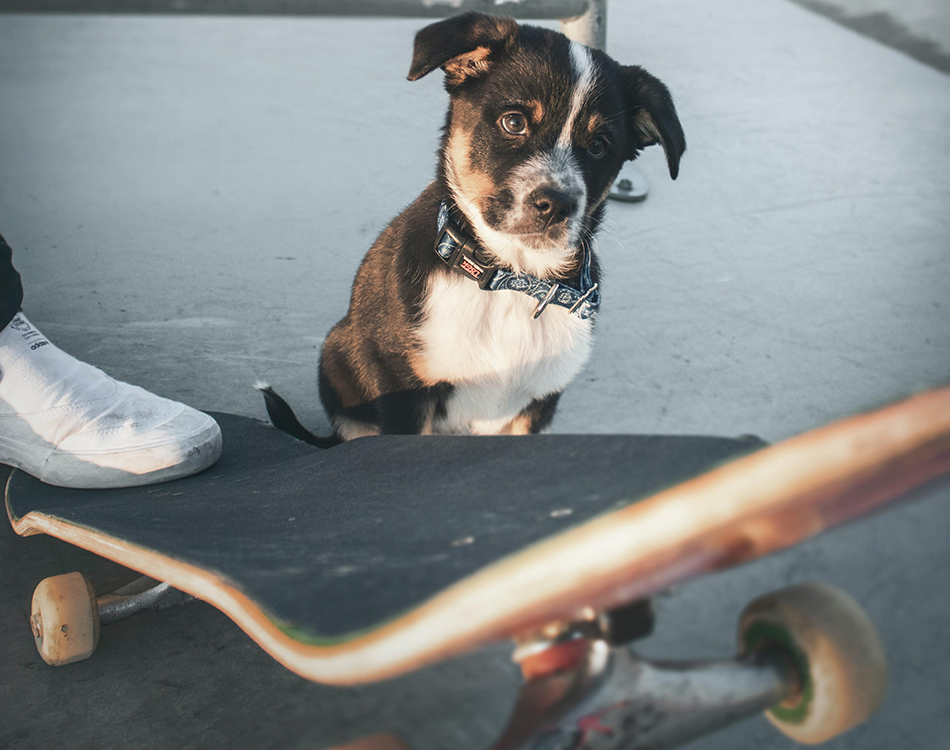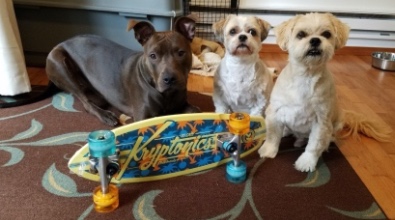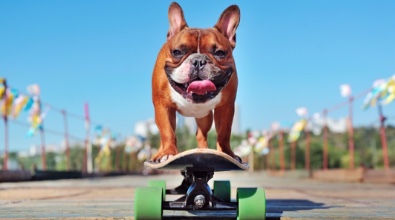For the owners who have the time, teaching your dog how to skateboard is an incredibly cool party trick that will impress your friends every time. Of course, your dog will not be the next Tony Hawk, but with enough practice, they can learn to push a skateboard from one end of the room to another with their front paws on the board. Although this trick looks complicated, the key to teaching your dog to skateboard is patience.
To teach your dog to skateboard, follow these steps:
1. Introduce your dog to the skateboard
The board should be large enough for your dog to stand on. Feel free to surround the skateboard with treats so that your dog associates the board with a happy, friendly environment. When your dog is first learning how to skateboard, they may have an easier time using a stationary board. Or, block the wheels so that the board cannot move.
2. Lure your dog onto the skateboard
The goal here is just to have your dog put their front paws up on the board. When your dog touches the skateboard, use a ton of praise to teach your dog that they are supposed to be on the board.

3. Lure their whole body up
As your dog continues to get more and more comfortable with the skateboard, encourage your dog to put their whole body on the board. Add a cue “UP.” This should be very similar to the “COME” command.
4. Start moving the skateboard.
At first, your dog may be uncomfortable with the board moving under their paws. You might even have to ask your dog to stay. When they stay, be sure to use substantial praise to allow them to know that they are ok. Start with short sessions – just a few seconds of movement before releasing your dog from the board. Then, increase the duration that you ask your dog to stay on the board. Just like any aspect of training, the more you practice with your dog, the more comfortable they will be standing on a moving skateboard.

5. Teach your dog to move the board on their own
Start with your dog’s front on the skateboard. With your hand or foot, slowly move the board so that your dog must shift their body weight to stay on the skateboard. Move the board towards a treat so that they are motivated to both stay on the board and move with the board. As your dog learns that they can push the board on their own, increase the distance that your dog is moving the board.
6. Let your dog push the board on their own towards a treat
At this point, your dog should recognize that by moving their back paws when their front paws are on the skateboard, they move their body altogether.
Ta-dah! Your dog is skateboarding!
As a note of disclosure, not every dog will be able to learn this trick. Age, agility, and breed all play a factor in your dog’s ability to skateboard. Regardless, remember that this is a fun trick for your dog – so keep it fun! Good luck!





